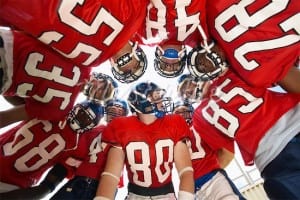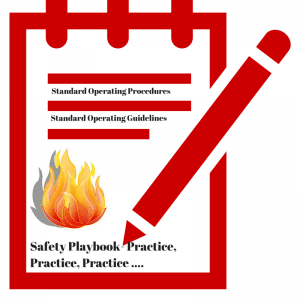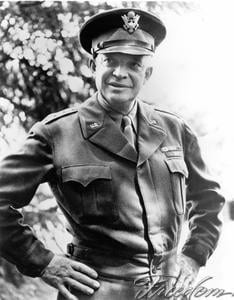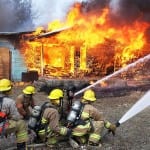I have many opportunities to talk with first responders about the importance of having Standard Operating Procedures (SOPs) or Standard Operating Guidelines (SOGs). These documents are essential to the safety of responders because they set the standard for training and for incident operations. [clickandtweet handle=”RichGasaway” hashtag=”#situationalawareness” related=”samatters” layout=”” position=””]Let’s look at why SOPs or SOGs are so important.[/clickandtweet]
No Play Book
 Imagine, if you can, a football team that has no playbook. The coaches and players are of the opinion they are so good, so well-practiced, and so experienced at the game that no playbook is needed. Under such conditions, a quarterback could simply convene a huddle and tell the team: “You’re all professionals… you know what to do”. And the huddle would break and the team would line up to run the play. How do you think this team is going to do against their opponent? (I know, some of you have a particular team in mind as I’ve laid out this parable. Let it go. Maybe they’ll be better next season.)
Imagine, if you can, a football team that has no playbook. The coaches and players are of the opinion they are so good, so well-practiced, and so experienced at the game that no playbook is needed. Under such conditions, a quarterback could simply convene a huddle and tell the team: “You’re all professionals… you know what to do”. And the huddle would break and the team would line up to run the play. How do you think this team is going to do against their opponent? (I know, some of you have a particular team in mind as I’ve laid out this parable. Let it go. Maybe they’ll be better next season.)
The Play Book
The playbook is the plan. It’s the standard accepted and commonly understood action that will take place under normal operating conditions. When such a plan is in place, every team member can expect fellow team members to know, and understand, the plan and their actions will be in support of the plan. This creates a common operating picture and creates shared situational awareness. It helps team members manage expectations of other team members’ performance and it helps the commanders manage the overall incident expectations.
Deviations
No plan is perfect. In fact, General Dwight D. Eisenhower stated “No plan survives the first encounter with the enemy”. General Eisenhower also noted that [clickandtweet handle=”richgasaway” hashtag=”situationalawareness” related=”samatters” layout=”” position=””][/clickandtweet] “[clickandtweet handle=”samatters” hashtag=”situationalawareness” related=”richgasaway” layout=”” position=””]Plans are useless, but the act of planning is priceless[/clickandtweet] ”. Planning helps responders get on the same page of understanding and expectations. When the plan won’t work, it’s perfectly fine – even essential – to deviate.
However, it is very important to communicate the deviation from the plan so others know why the standard, as written, won’t work. This also helps to strengthen mutual understanding and cut down on confusion. When a crew is not doing what is expected, it will result in confusion. Communicating the deviation gets everyone dialed in to the new plan – with an explanation.
Realistic and Achievable
It is very important when developing standards that they be realistic and achievable for your organization. I worked with an organization that once “borrowed” standards from a much larger metropolitan fire department. The standards were, in general, exceptionally well-written and thorough. However, the smaller agency that adopted the standards did so without thoughtful consideration as to whether they could actually achieve the standards.
Well, that last sentence isn’t exactly accurate. In my interview of command officers following a catastrophic event, they admitted to me that they knew their agency could not achieve the expectations laid out in the written standard – even on their best day with their maximum on-duty staffing. And while they knew it, they did not adjust the standard to be realistic and achievable for their specific agency. This ended up being a contributing factor to their tragic outcome.
Train to the Standard
Once a standard is established, it is critical that all personnel be trained to the standard. This does not mean “read this and sign-off.” If the standard addresses activities that require hands-on performance then the training must be hands-on. The muscles do not learn from verbal (or written) instructions. [clickandtweet handle=”richgasaway” hashtag=”situationalawareness” related=”samatters” layout=”” position=””]The muscles learn from muscle movement.[/clickandtweet] c If the standard addresses performance that requires muscle movement, drill on the standard.
Adjustments
Chances are good that once multiple drills are conducted on the standard, questions are going to arise and suggestions for how to improve the standard are going to surface. This should not only be expected, it should be embraced. Come on! Who among us can sit in an office and develop a perfect standard based on our imagined outcome? Standards must be battle-tested and adjusted after all. No standard should ever be written in stone, especially new ones.
Chief Gasaway’s Advice
 One of the goals we should have for all responders is to ensure everyone is on the same page when it comes to how an incident is going to be handled. Ideally, that would be in writing. But if not in writing then, at a bare minimum, thoroughly understood verbally (which is much harder because the meaning can morph and change for each person who passes along verbal expectations).
One of the goals we should have for all responders is to ensure everyone is on the same page when it comes to how an incident is going to be handled. Ideally, that would be in writing. But if not in writing then, at a bare minimum, thoroughly understood verbally (which is much harder because the meaning can morph and change for each person who passes along verbal expectations).
Think about professional football teams. No matter how good they are and how much they practice, they still have plays – written plays – that guide their actions. And they practice those written plays over and over again until they perfect them. Do they improvise in the moment? Of course they do. And you will too. No play, regardless of how much effort is put into its development, is perfect.
Test your playbook. Test it hard. Find its chinks and cracks and adjust it accordingly. For example, if you have a play that can only be run by the top 2% of your members, that play is not realistic. You either have to adjust the play, or work harder to get the members up to speed on how to run the play.
Don’t test your plays, have them fail during practice, and then be under the delusion that the plays will somehow work on the battlefield (fire ground). That will almost never happen. And if it does, it will be more from luck than skill. A well-designed play, with repetitive, realistic practice, should have a low occurrence of failure. And each occurrence of failure should be evaluated to determine how and why it failed. Yes, what I am describing is time-consuming and full of effort. But on the fire ground, you may only get one opportunity for a proper, flawless execution.
Action Items
 1. Evaluate your SOPs/SOGs to ensure you have a written game plan, especially for those activities that are high-risk and low-frequency. There is too much at stake to leave it to chance.
1. Evaluate your SOPs/SOGs to ensure you have a written game plan, especially for those activities that are high-risk and low-frequency. There is too much at stake to leave it to chance.
2. Discuss opportunities to improve existing SOPs and SOGs. What’s not working? If you know it’s not working, fix it!
3. Discuss opportunities to develop new SOPs/SOGs that will improve the common operating picture of members and improve operational safety.
4. Test your SOPs and SOGs to ensure they are realistic and achievable by your department. If they’re not, adjust them and retrain.
_____________________________________________________________
Now, for the first time ever, you can receive the content of this valuable safety programs in the NEW Situational Awareness Matters Virtual Academy… at your own pace – from home or while you are on-duty.
_____________________________________________________________
Share your comments on this article in the “Leave a Reply” box below. If you want to send me incident pictures, videos, or have an idea you’d like me to research and write about, contact me. I really enjoy getting feedback and supportive messages from fellow first responders. It gives me the energy to work harder for you.
Thanks,

Email: Support@RichGasaway.com
Phone: 612-548-4424
Facebook Fan Page: www.facebook.com/SAMatters
Twitter: @SAMatters
LinkedIn: Rich Gasaway
YouTube: SAMattersTV
iTunes: SAMatters Radio




Situational awareness in Endsley’s model has three levels: perception, comprehension, and projection. In a dynamic situation, situational awareness is embedded in a loop where the environment affects SA and decisions made under a particular level of SA affect the environment (and hence future SA).
System design – The ergonomics of a system are very important. …
Stress and Workload – Stress affects our ability to process information. …
Automation – An individual needs to keep themselves active in monitoring automatic systems.
An introduction to what Standard Operating Procedures are, why your … Procedures are not a be-all, end-all solution – they will not guarantee excellent … continue uninterrupted and are completed on a prescribed schedule.